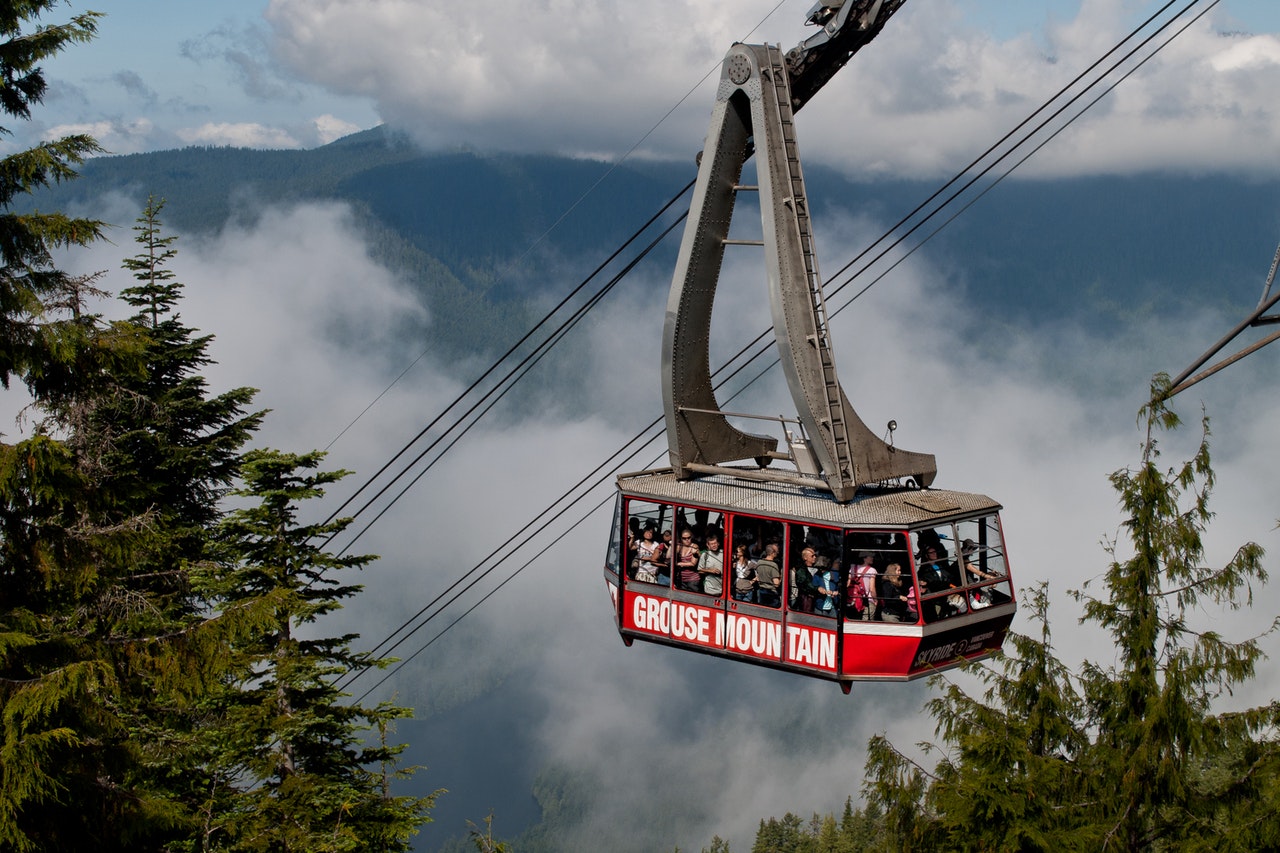A recent decision out of the B.C. Court of Appeal that overturned a B.C. Supreme Court ruling has significant implications for ski hills and other outdoor/adventure tourism operators who rely on “ticket case” liability waivers. We wrote about the Apps case in a previous blog post.
The Trial Decision
The B.C. Supreme Court released its decision in 2019. In brief, a snowboarder suffered catastrophic injuries after falling in the snowboard terrain park on Grouse Mountain. He brought a claim alleging that Grouse’s jumps were too dangerous, that the ski resort was negligent in designing the terrain park, and that it did not sufficiently warn the public about the potential risk for serious injury. The case turned on the question of whether it would be fair in the circumstances to hold the plaintiff to Grouse’s waiver; this in turn depended on the efficacy of the notice given by Grouse.
This was an example of the subset of waiver cases known as “ticket cases” – the individual did not sign an actual waiver document, but the waiver language was presented to him through various means. Prior cases have made clear that, while there are factual distinctions between the situations, the principles of law are the same.
After reviewing prior cases, the judge summarized the law as follows:
- The more onerous the exclusion clause the more explicit the notice must be;
- A waiver of an occupier’s own negligence is among the most onerous of clauses;
- The form, location and architecture of the notice are factors to be considered when assessing the reasonableness or efficacy of the notice; and
- Although reasonableness of the notice is an objective test, the circumstances of the plaintiff are to be taken into consideration. This includes the plaintiff’s age, level of education and previous experience with waivers of the same or similar recreational areas.
In this case, prior to buying the lift pass, the only notice that skiers/snowboarders had of the waiver of liability was a 38cm x 50cm bright yellow poster with red border posted in the window of the ticket booth above the head of the ticket seller. The judge found it “unrealistic” to believe that a person approaching the ticket booth would stop and read that sign.
However, the waiver in virtually the same language and in the same format was also on the back of the lift ticket, and the terrain park contained two large signs (in large bold capital letters beside a red stop sign: “READ THIS!!!”) further warning of the risks in using the terrain park and describing the grades of the jumps in it.
The injured snowboarder said that he had not read these waivers/warnings. He did, however, have “considerable” experience with waivers given that he was: a season pass holder at Whistler Blackcomb (and had seen, but not read, its liability waiver), and a ski/snowboard rental technician at Whistler (where he was trained to administer the waiver to each customer who rented equipment and to witness his or her signature).
In the end, the trial judge found that, given his experience, the snowboarder should have known of the waiver of liability, and that while the sign by the ticket window was difficult to read, the one at the terrain park was not. The fact that he chose not to read the waivers did not render them invalid or inapplicable to him. Thus, Grouse had given him reasonable notice of the risks of snowboarding and the use of jumps, and his case was dismissed.
The Court of Appeal
Apps appealed, and the B.C. Court of Appeal released its decision on March 4, 2020. The three-member panel unanimously overturned the trial decision, finding that Mr. Apps was not bound to Grouse’s liability waiver. This does not necessarily mean that Grouse is liable for Mr. Apps’ injuries. As the liability waiver question was a preliminary motion (i.e. it was argued before the full trial to assess Grouse’s liability), the Court of Appeal’s decision simply means that Mr. Apps’ case will proceed.
Before the Court of Appeal, Apps advanced four different grounds of appeal. We only need to concern ourselves with the first two: 1) that it was an error for the trial judge to take into consideration what was posted on signage that Apps would not have seen until well after he purchased his lift ticket (i.e. the signs at the terrain park entrance), and 2) that the judge errored when dealing with the law of incorporation of knowledge by prior experience (i.e. Apps’ knowledge of waivers from his Whistler job).
OVERVIEW
The Court of Appeal noted that this was a “ticket case”. As such, the mere fact that a ticket had waiver language written on it is not sufficient to put the ticket holder on notice of those waiver terms. In such cases, it all comes down to a question of how much notice was given to the ticket holder of the terms. Just how much notice is required for it to be “reasonably sufficient” is something the courts have struggled with since the first ticket case, dating back to 1877 (Parker v. South Eastern Rail Co. (1877), 2 CPD 416).
As correctly noted by the Apps trial judge, the amount of notice that the courts require depends on the nature of what is being released or excluded: the more onerous the condition, the more rigorous is the requirement for what constitutes reasonable notice. Amongst the most onerous of conditions is the “own negligence” clause – where a company seeks to release not only injuries resulting from the “inherent risks” of an activity, but also injuries resulting from their own negligence.
In the Apps case, the Court of Appeal examined two separate legal contexts – the law of contract (as reviewed above regarding whether a purchaser is bound to waiver terms included in their contract of purchase), and the B.C. Occupiers Liability Act (“OLA”).
Section 3(1) of the OLA imposes a statutory duty on an occupier of a premises (such as Grouse) “to take care that in all the circumstances of the case is reasonable to see that a person… will be reasonably safe in using the premises”. However, section 4 of the OLA permits an occupier to contract out of that statutory duty. To do so, they “must take reasonable steps to bring that extension, restriction, modification or exclusion to the attention of that person”.
Thus, whether in contract or under the OLA, the question of whether Grouse could rely on its liability waiver depended on whether they took reasonable steps to bring the exclusion to the attention of Apps.
POST-CONTRACT NOTICE
There is a fundamental principle in contract law that a person can only be held to a clause limiting liability if that clause is drawn to their attention at the time of contract formation. For Mr. Apps’ case, that means when he gave money in exchange for his lift ticket. The law does not permit a court to take into consideration notice of such clauses given after the formation of the contract.
The Court of Appeal found that the trial judge had conflated two distinct issues: first, whether Grouse took sufficient steps to give reasonable notice of the risks and hazards of the jump in the terrain park where Apps was injured (this would be a factor in the eventual consideration of whether Grouse was liable for Apps injuries, but not in the consideration of whether Grouse could rely on their waiver); and second, whether Grouse took sufficient steps to give reasonable notice of the waiver of their own negligence.
In relation to the trial judge’s analysis of whether Grouse gave sufficient notice of the own negligence waiver, the Court of Appeal found it “inescapable” that she had considered not only the sign at the ticket booth, but also the signs at the terrain park entrance. This was wrong in law.
Only the steps that Grouse took before and at the time of ticket issuance can be taken into account in assessing whether Grouse took sufficient steps to give reasonable notice to Apps of the terms of its waiver, particularly the own negligence clause.
The warning/waiver signs at the terrain park entrance were only relevant to the question of whether Grouse gave reasonable notice of the risks of using the park. By the time Apps arrived there, he had already paid for his (non-refundable) ticket, took a lift up the mountain, and started snowboarding. At that point, it was far too late for Grouse to give him notice of what was in the waiver. That notice had to be given at (or before) the ticket booth.
Without reference to the terrain park signs, the Court of Appeal was left with the trial judge’s factual findings, including 1) the ticket booth sign was “difficult to read”, 2) the own negligence exclusion was “not highlighted or emphasized in any way”, and 3) “it is unrealistic to believe that a person approaching the ticket booth would stop in front of the window to read the sign”.
PRE-CONTRACT EXPERIENCE
Did Mr. Apps have sufficient notice of the own negligence clause because of his previous experience at Whistler?
The Court of Appeal found that, as a matter of contract law, it is only actual knowledge of the specific term in question through a person’s previous dealings that is relevant. Mr. Apps had never dealt with Grouse (and its liability waiver) before. The Court ruled that he could not be bound by the own negligence clause in Grouse’s waiver because he had previously signed a contract with Whistler that had a similar clause. The fact that he may have had some previous awareness of liability waivers and own negligence clauses at Whistler did not mean that he could be seen to have waived legal rights with respect to Grouse. His Whistler experience was not transferrable to satisfy what Grouse needed to do to be able to contract out of the OLA and other legal liabilities.
Conclusion
The B.C. Court of Appeal has unanimously found that Mr. Apps was not bound to Grouse’s liability waiver. What this means is that Mr. Apps’ case against Grouse can now go forward to trial, where it will be determined if Grouse is responsible for his injuries.
This decision has significant implications for ski hills and other outdoor/adventure tourism operators who rely on “ticket case” liability waivers. As discussed in a previous liability waiver blog post, an individual need not sign an actual waiver document, as long as it can be shown that the waiver was reasonably brought to their attention. What constitutes “reasonable” efforts depends on what is in the waiver. Clauses that release an operator’s “own negligence” are among the most onerous of exclusionary clauses, and the more onerous the exclusionary clause, the more explicit the notice must be.
Here, Grouse’s reference to the own negligence clause was “buried in a difficult-to-read section, among colons and semicolons, with no attempt to highlight it or emphasize it in any way, in a notice posted where it would be unreasonable to expect anyone to stop and read it.” It stands to reason that companies wishing to impose such clauses on their customers should prominently post their waivers in easy to view locations (for example, within direct line of sight when looking at the ticket location) and ensure that “own negligence” clauses are particularly highlighted (for example, bolded, yellow highlighted in a red colored box).
Ryan Morasiewicz [hyperlink to firm bio] has significant experience drafting liability waivers and is happy to speak with you about your particular circumstances.
Note: This article is of a general nature only and is not exhaustive of all possible legal rights or remedies. In addition, laws may change over time and should be interpreted only in the context of particular circumstances such that these materials are not intended to be relied upon or taken as legal advice or opinion. Readers should consult a legal professional for specific advice in any particular situation.





